Chatter Marks
Chatter Marks is a podcast of the Anchorage Museum, dedicated to exploring Alaska’s identity through the creative and critical thinking of ideas—past, present and future. Featuring interviews with artists, presenters, staff and others associated with the Anchorage Museum and its mission.
Episodes
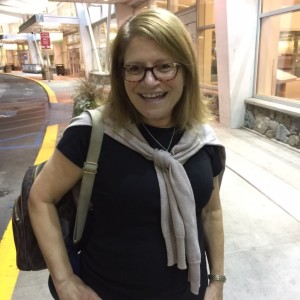
Thursday Aug 11, 2022
EP 44 Johnny’s Girl, a neon Anchorage and a life of her own with Kim Rich
Thursday Aug 11, 2022
Thursday Aug 11, 2022
Kim Rich is a journalist and an author. She wrote the classic memoir “Johnny’s Girl,” it’s about her tumultuous upbringing in Anchorage’s underworld. Back in the 1960s, her dad, Johnny, worked Anchorage’s nightlife — gambling houses, prostitution and get-rich-quick schemes. Her mom, Ginger, was an exotic dancer. She had mental health issues and spent years of her life in a number of institutions. Both of their lives — Johnny and Ginger — were cut short, leaving Kim to fend for herself at a young age.
Through research, interviews and recollection, Kim would write about her parents to try to work out her feelings and understanding of them. She found that her dad was a complicated man, and that her mom was a tragic figure — loving and caring, but in the throes of mental anguish.
She’s always put a lot of thought into describing and understanding Anchorage as a city and the people who live there. In her book, she describes it as neon — both physically neon and existentially neon. The bright, flashy lights of downtown Anchorage and the pioneer spirit of the 60s influenced her perception. It was a place of endless possibilities, where anyone could do anything; a place you could run away to and remake yourself in whatever image you wished.
Today, Kim says that she’s enjoying getting older and that she feels like she’s finally mellowing. She lives in Louisiana — teaching journalism and trying to get used to the fact that her kids have moved out of the house — but she still considers Alaska home.
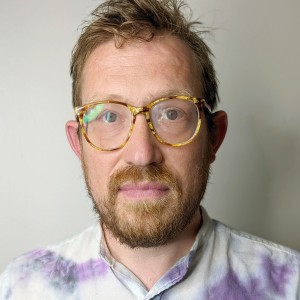
Monday Aug 01, 2022
EP 043 Digging for Alaskana with Jimmy Riordan
Monday Aug 01, 2022
Monday Aug 01, 2022
Jimmy Riordan is a multidisciplinary artist and educator who’s currently in-residence at the Anchorage Museum, digitizing and archiving the work of Yukon-Kuskokwim Delta musicians, as well as all the other Alaska music he’s collected over the years. He spends a lot of time in thrift stores and going through junk bins and scouring the internet — anywhere old records might exist.
When he first started listening to old Alaskan albums and radio programs, he thought he was going to hear a lot of tourist music and songs about things like reindeer and caribou. But he soon realized that there was a lot of diversity in what he was hearing. There was hip hop, psychedelic rock, metal, punk. He even found a record of soundbites from people talking about their experience during the 1964 earthquake.
His motivation is that of a fan, driven by interest and excitement. If he can provide a service that is useful, in exchange for all the information and all the stuff that he’s getting, then that’s what he’s looking to do. His fascination with the music of Joe Paul is a good example. Joe Paul is a country and gospel singer originally from Kipnuk, Alaska, a community along the Kuskokwim River. And one day, while out digging for Alaskana, Jimmy came across one of his albums, “Eskimo Songs, Stories and Country Music.” He was floored by it and says that it rejuvenated his interest in collecting.
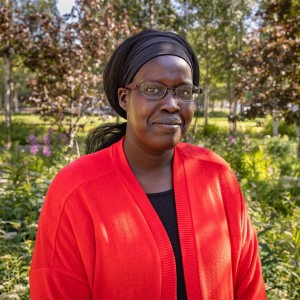
Monday Jul 11, 2022
EP 042 Navigating two different cultures with Nyabony Gat
Monday Jul 11, 2022
Monday Jul 11, 2022
Nyabony Gat says that her immigrant story started 22 years ago. In 1992, when her parents and older siblings fled from South Sudan and found refuge in Ethiopia — the Second Sudanese civil war was going on between the central Sudanese government and the Sudan People's Liberation Army. It was a long and bloody war and it caused four million people to be displaced.
Nyabony doesn’t remember much from her childhood. She knows that she was born in Ethiopia and she knows that she and her family came to the United States when she was 3 or 4 years old. Other than that, she’s had to rely on stories from her parents and her aunts and her uncles. Those stories are helpful in understanding her identity, but they’re not a perfect substitute. She says that only personal experience can fill that void.
Today, she works with Alaska’s immigrant and refugee community. She helps them overcome challenges and achieve their goals. And in that process, she says, they’re helping her better understand her background and herself.
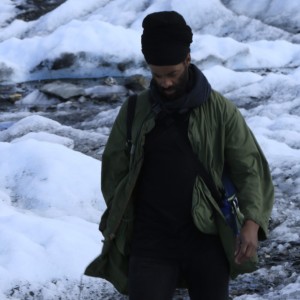
Tuesday Jul 05, 2022
EP 041 The things beyond our sensorial understanding with LaMont Hamilton
Tuesday Jul 05, 2022
Tuesday Jul 05, 2022
When interdisciplinary artist LaMont Hamilton was young, he drew portraits of figures that he admired — Jimmy Hendrix, Che Guevara, Malcom X. He called it “scribble art,” a term he invented to describe abstract art that, the longer you look at it, the more it reveals. Then, as he got older, he became interested in photography. But he says that his first love, the one that he considers to be the foundation of his work, is poetry.
He says that a lot of what he does cannot easily be translated to words. It needs to be experienced and understood through our senses. To sit with it and to meditate on it opens us up to its energy and allows ideas to gravitate toward us. When this happens, we create a situation that nurtures a deeper conversation with the world around us.
Right now, he’s in-residence, at the Anchorage Museum, working with poets, artists and musicians, and developing a light and sound installation called "To Hear the Earth Before the End of the World." It features sounds of elements — air, earth, fire, water, and aether. And field recordings from Europe and North and South America — sounds of our changing earth. He says that, unlike a painting, this exhibition is an experience that encounters you, you don’t encounter it because it’s going to be playing whether you’re there or not.
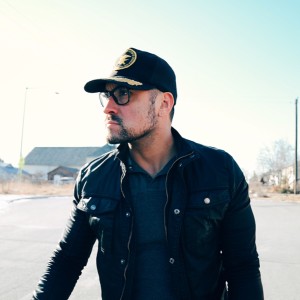
Sunday Jun 26, 2022
EP 40 Infusing life and art with Charles J. Tice
Sunday Jun 26, 2022
Sunday Jun 26, 2022
Charles J. Tice is a visual and literary creative in Anchorage, Alaska with an emphasis on photography and gonzo journalism. He's currently in-residence, at the Anchorage Museum, working on a project called Artist Proof #6. It’s a book that’ll feature 100 photographs of strangers, assisted by a narrative. The writing is important, he says, probably the most important part of the project. So, he works on a typewriter because it’s less about technical precision and more about getting his ideas onto the page. He says the project is a love song, and that it’s as much about discovering who he is as it is about representing his community.
Most of the work that he does is a first person narrative. He creates gonzo journalism, infusing himself into a story and becoming part of it. This was true when he quit a steady job to work on a political campaign that he believed in; It was true when he hitchhiked across the United States, photographing people and talking to them about their lives; It was true when he tracked down his birth mother; And it’s true now. Because, more often than not, his life and his work are one and the same — they’re forever intertwined and feeding off each other.
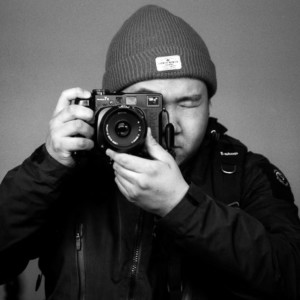
Tuesday May 31, 2022
EP 039 Searching for community with Young Kim
Tuesday May 31, 2022
Tuesday May 31, 2022
Photographer Young Kim says that it’s weird to live in a place that’s so big and so busy that people aren’t checking up on each other. He prefers smaller communities where everyone knows each other. His longing to be part of something tight-knit might come from his early childhood, when he and his family lived in Sand Point, a town of about 600 located along the Aleutian Islands.
Young’s sense of community has, at times, been reinforced by growing up in the restaurant industry. Specifically, he remembers the staff dinners, when everyone would sit down together for a meal after their shift. Today, Young is the co-owner of Akela Space, a community gallery and photography studio in Anchorage. It’s a place that he and his co-owner, Jovell Rennie, hope to be a hub for community and for knowledge.
The photography that Young is working on right now is about his mom and how their relationship is changing. When we’re younger, our parents are the caregivers, but as we get older those roles can switch. So, it’s important for our expectations to be flexible because things don’t always play out the way we imagine.
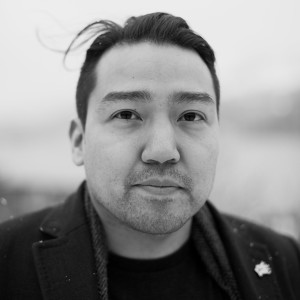
Monday May 16, 2022
Monday May 16, 2022
Rico Worl owns a business in Juneau that aims to distribute money spent on Alaska Native art back into Alaska Native communities. His business is called Trickster for the raven in Alaska Native culture that represents the Creator and is always playing tricks. Trickster began as a skateboard company, so there’s that association too. In fact, the idea for it started when Rico painted his clan crest onto his longboard and skated around Juneau.
Before the pandemic, Juneau saw about a million tourists a year. Many of which purchase what Rico calls knockoff Alaska Native art. A small percent of that money actually goes back to the communities that developed the art form. Rico recognized this and came up with a plan: He would design and sell art that blends modern and traditional styles and make sure the proceeds go back to the Alaska Native communities from which they came.
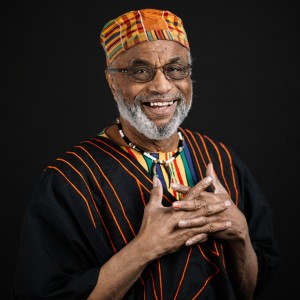
Friday Apr 22, 2022
EP 037 A life of activism with Cal Williams
Friday Apr 22, 2022
Friday Apr 22, 2022
Cal Williams is an activist and community archivist. He sees his involvement in activism as more of a pull than a draw. He didn’t plan it, it just happened. Seven days after he was born, Pearl Harbor was bombed and most of the men in his life went to war. So, the influences he had at those early ages came from the women in his life. He saw how they did what they could to help the war effort.
He’s 80 now, and his list of achievements are extensive. They include the president of the NAACP of Alaska, the recipient of the St. Francis of Assisi Award and working with HistoryMakers, an organization that collects and preserves the well-known and unsung stories of African Americans. Considering his current work with HistoryMakers and the Anchorage Museum, Cal says that he chases the dead — he reads obituaries and attends funerals in order to collect the stories that would otherwise be lost forever.
Photo by Jovell Rennie


